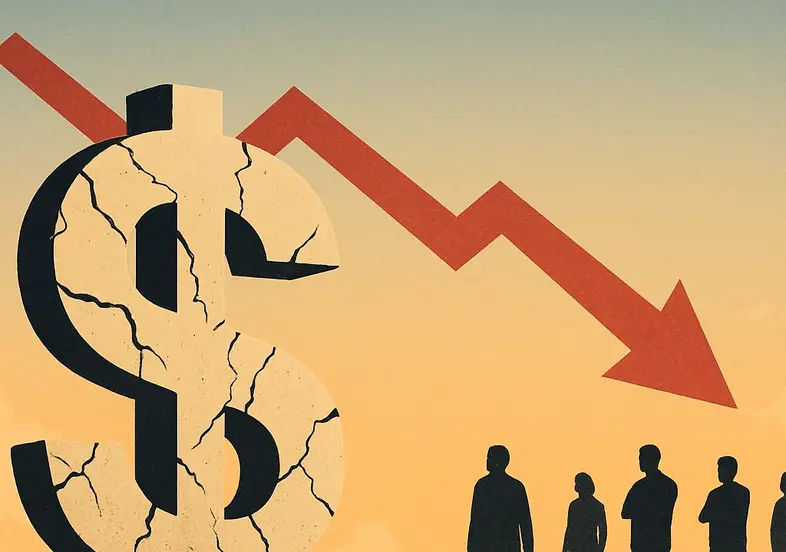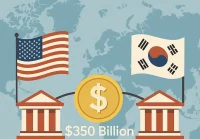Introduction
Job Market for American Workers is under pressure as the U.S. dollar — long considered the world’s reserve currency — enters a period of significant weakness. As policymakers and economists debate the merits and risks of a weaker dollar, American workers are left to wonder: how will currency devaluation reshape the job market? This article explores the strategies behind dollar devaluation, its hidden impacts, and what it means for job seekers and employers alike.
Understanding the Dollar Devaluation Strategy
Currency devaluation is not a new concept. The US has previously engaged in coordinated efforts to weaken the dollar, most notably during the 1985 Plaza Accord. Today, some experts are calling for a new “Mar-a-Lago Accord” to address the dollar’s 15-20% overvaluation and the nation’s staggering $1 trillion trade deficit. The goal: make American exports more competitive and reduce the trade gap.
The Hidden Impact on American Jobs
While a weaker dollar can boost exports, it also raises the cost of imports, affecting everything from consumer goods to industrial inputs. This shift can lead to job losses in sectors reliant on cheap imports, but it can also spark job growth in export-oriented industries. The net effect on employment depends on how quickly businesses and workers can adapt.
How Dollar Weakness Will Create New Job Opportunities
As the dollar weakens, US-made goods become more attractive to foreign buyers. This can lead to increased demand for American products, driving job creation in manufacturing, agriculture, and technology. Companies that previously struggled to compete with low-cost imports may find new life in a more favorable currency environment.
Industries Most Affected by Currency Changes
Industries with high export potential—such as aerospace, automotive, and advanced manufacturing—stand to benefit the most. Conversely, sectors dependent on imported materials or products, like electronics retail and apparel, may face higher costs and potential job cuts. The overall impact will vary by region and industry specialization.
The Federal Reserve’s Role in Job Market Transformation
The Federal Reserve plays a critical role in shaping currency values through interest rate policy and quantitative easing. Recent changes in Fed policy, including rate cuts and asset purchases, have contributed to dollar weakness. These moves are designed to stimulate economic growth and job creation, but they also carry risks of inflation and asset bubbles.
Looking to Hire Fast?
If your business is ready to capitalize on new opportunities in a changing job market, act now. Post your job openings on WhatJobs and connect with skilled American workers eager to contribute to the nation’s economic revival.
Post a Job Now →What This Means for Your Job Search Strategy
Job seekers should pay close attention to currency trends and target industries poised for growth. Upskilling in areas like advanced manufacturing, logistics, and export compliance can provide a competitive edge. Flexibility and a willingness to relocate may also open doors in emerging job markets.
Geographic Considerations for Job Seekers
Regions with strong manufacturing bases—such as the Midwest and South—are likely to see the greatest job gains from a weaker dollar. Coastal areas reliant on imports may face more challenges. Understanding these geographic dynamics can help job seekers make informed decisions about where to focus their efforts.
The Reindustrialization Job Boom
A weaker dollar could spark a reindustrialization boom, bringing back jobs that were previously offshored. Investments in infrastructure, clean energy, and advanced manufacturing are expected to drive demand for skilled workers across the country.
Long-term Career Planning in a Weaker Dollar Environment
Workers should consider how long-term currency trends may affect their career prospects. Fields tied to exports, infrastructure, and domestic production are likely to offer greater stability and growth potential in a weaker dollar environment.
The Psychological Impact of Economic Transformation
Major economic shifts can create uncertainty and stress for workers. It’s important to stay informed, seek support, and remain adaptable as the job market evolves. Employers can help by providing training and resources to ease the transition.
Conclusion: Navigating the Dollar Weakening Job Market
The coming years may bring significant changes to the US job market as the dollar weakens. By understanding the forces at play and preparing for new opportunities, American workers and businesses can thrive in a transformed economic landscape.
Frequently Asked Questions
What is the Mar-a-Lago Accord?
A proposed agreement among major economies to coordinate a controlled devaluation of the US dollar, similar to the 1985 Plaza Accord.
How does a weaker dollar affect jobs?
It can boost export-related jobs but may hurt sectors reliant on imports.
What industries benefit most?
Manufacturing, agriculture, and technology are likely winners.
What should job seekers do?
Focus on upskilling and target growth industries.
Mike’s Manufacturing Career Revival
Mike, a mid-career manufacturing worker from Ohio, lost his job when his factory closed due to foreign competition. With the dollar’s recent decline, his former employer reopened the plant to meet rising export demand. Mike was rehired, received training in advanced manufacturing techniques, and now enjoys greater job security and higher pay. His story illustrates how currency shifts can create real opportunities for American workers.




